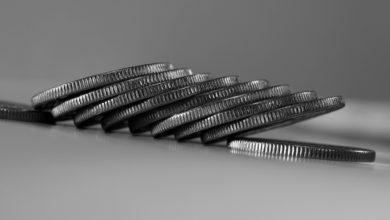What is the Future of our Smaller Museums
[ad_1]

(NewMediaWire) – December 17, 2020 – Burbank, CA – Los Angeles and the San Fernando Valley are filled with not only the biggest museums in the state, but they are also home to some of the most unique small and modest museums one could genuinely enjoy. In fact, 50 percent of the museums in Los Angeles County are all small museums. As the result of the governor’s shutdown of museums through the state, each of these small museums now all has one major thing in common, they are on the verge of closure and never to return.
Granted, the pandemic has also temporarily shut down the larger museums such as the Natural History Museum, the La Brea Tarpits, and many others who brought in thousands of young kids nearly every day. However, unlike the small museums, they have a vast staff that enables them to employ grant writers, full-time employees that reach out to acquire major sponsorship gifts, and an unending supply of memberships. They have more than enough funds to whether through this nearly year-long shutdown. The smaller museums do not have this luxury. Most are struggling to get by, and many are completely run by volunteers without paid employees to facilitate the museums.
The county has been fortunate to have people dedicate their lives to preserving history without or barely receiving any type of government assistance. Some of these include the Martial Arts History Museum in Burbank, the Museum of Jurassic Technology in Santa Monica, the Museum of Neon Art in Glendale, the Heritage Museum in Hollywood, the Valley Relics Museum in Van Nuys, the Flying Museum of Santa Monica, the Doctor’s House Museum in Glendale, the Gordon R. Howard Museum in Burbank, the Santa Monica History Museum in Santa Monica, the Saugus Train Station Museum in Santa Clarita, the Museum of the San Fernando Valley in Northridge, the Walt Disney’s Carolwood Barn in Los Angeles, to name a few.
“Not every small museum has the capabilities to allow them to grow into a large facility. The Japanese American National Museum, which now resides in a huge complex, was housed in a warehouse for nearly 20 years until the city of Los Angeles granted them a large location as was the Chinese American National Museum,” says Michael Matsuda, president of the Martial Arts History Museum, a 21-year old facility in Burbank. “This has not been an easy journey, but with the forced closure of all of our facilities, many of the smaller museums will not be able the withstand these arbitrary lockdowns, and how sad will it be if they are gone forever. I personally sold my home in order to have this museum, and I could lose it all just like that.”
A few of the smaller museums have launched crowdfunding campaigns and special auctions to raise funds until they can be re-opened. “The museum is a structure to remind us at how we got here,” expressed Mario Prado, a supporter of the small museums. “It would be ashamed to have a place that has been run in many cases, by just a married couple, be closed by the whim of someone’s decision.”
“There have many different kinds of covid funding, but there are no funds if you run a business which does not have any employees. Many business owners, not just museums, don’t take a salary and put any funds received right back into the business. Which means they don’t qualify for relief, which is my case. There is no unemployment for us, even though jailed prisoners are getting relief, why can’t we?” adds Matsuda.
According to Governor Newsom, museums draw crowds that stay for more extended periods of time, and it attracts visitors from all over the country. This may be true for larger museums, which can have up to 12,000 kids a day. However, smaller museums are lucky to have 25 people throughout an entire day who spend less time than those shopping in Costco, Walmart, and Ralphs, which all bring in thousands every hour and have never closed since the pandemic started.
So, what is the future for small museums? Will they be able to survive a full year of this lockdown, and if the lockdowns continue, how can they possibly last? The answer lies in two areas: it is up to the local government representatives to petition for covid relief for small museums or take a step themselves and provide funding relief opportunities, and, it is those in the community who feel small museums have a unique place in all of our lives.
In conclusion, if anyone believes that these small museums have a place in the community, then make a generous, tax-deductible donation to anyone of your smaller museums.
[ad_2]




